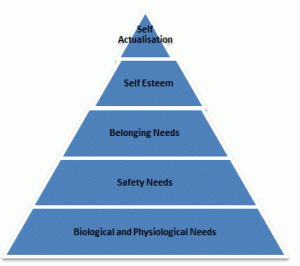Employee Engagement – Why’s everyone making such a big deal?
It’s certainly a hot topic at the moment in almost every workplace, where the senior leadership teams are looking at Employee Engagement and trying to understand 1) what engagement actually is/looks like 2) ways to further engage your workforce 3) benefits of having engaged employees. This particular blog is looking to give you a general insight into all of those points and hopefully spark a few ideas that may support you when having conversations internally.
To begin with I thought it would be useful to give a high-level definition of what Employee Engagement actually is…
Employee engagement illustrates the commitment and energy that employees bring to work and is a key indicator of their involvement and dedication to the organisation. (HR Council)
Something that I am keen to emphasise and wish everyone to reflect on following on from this particular blog, is the fact that engagement doesn’t necessarily have a clear definition. It depends on a number of factors and it’s important to ask yourself “what does an engaged employee look like to within your organisation?”. However, I’d also like you to consider “what is it that engages me?”.
I remember back when I was at school studying business and on a number of occasions we covered the subject of engagement. Back then me and the rest of my classmates could not see past remuneration as being the only thing to motivate employees. In all fairness this was backed up by F.W. Taylor’s (1856-1915) study whereby Taylor emphasised employees are in fact motivated by money and objective laws should be used as key metrics to analyse performance. Should employees be meeting these targets then conflict between management and employees would be lowered and therefore, engagement would increase.
Another element of the study looks at division of labour where a job is broken down into small, repetitive tasks and therefore, can be completed at high speed, with little training. A theory that we see in the construction industry today is “payment by piecework”, in short this means that you are paid per item produced e.g. laying a brick.
Although Taylor’s thoughts had great success for the likes of Ford Motor company on their production lines, it didn’t have the same results in other industries. Extreme division of labour meant that jobs became boring and repetitive. This also left organisations with low skilled employees and therefore, a lack of power/progression. Following on from this organisations would see low morale and also poor industrial relations – hence why we have our good old friends at the trade unions today… (Wolinski, J. and Coates, G. (EDS), 2008 Business Studies 2013., Oxfordshire: Bookpoint LTD)
Taylor’s study provoked another piece of work which was conducted by Elton Mayo. Mayo completed a number of projects that tried to fight against the point of “money being the key motive”. Mayo’s research was mainly conducted within a factory over in the US. He began small, for example; he divided two groups within the factors, one group had poor lighting and the other had much improved lighting. He found that engagement increased for the guys with better lighting however, also productivity increased! Mayo’s work challenged Taylor by saying that it is in fact Human relations that motivates employees, as appose to money.
The final study I am going to talk about is Maslow’s hierarchy of needs, which I am sure many of you will have come across in the past. This theory discusses a number of low-high level needs that every human being has, there are five categories in total…

- Phycological – in relation to work this is reasonable working conditions.
- Safety – in relation to work this means having a secure job, safe working environment and adequate pension arrangements
- Social – in relation to work this means being part of a team, getting along with colleagues and being provided with social facilities e.g. staff room and canteens
- Esteem – in relation to work this means receiving positive feedback, recognition and opportunities for promotion
- Self-actualism – in relation to work this talks about being able to achieve and be satisfied with your performance
I’m not usually one for academic literature and typically I prefer to write my blogs based on opinions however, I felt as though it would right to use some referenceable evidence in this case, due to the fact that everyone thinks that they know engagement… just the same as everyone thinks that they can paint… I’ve seen some horror shows… congratulations to my girlfriend for being the worst painter yet…!
What happens if employees are not engaged?
I’m keen to keep the rest of the blog quite light hearted and hopefully a bit less formal that the first section. Anyway, moving on to my second point of discussion which looks at “what happens if employees are not engaged?”
- Attrition – the most obvious effect of poor engagement levels will be people leaving the organisation. In some cases, this is made worse by the fact that they join competitors.
- Poor quality work – should your employees be less engaged then they will not care about the reputation of the business or the product/service that they are delivering.
- Poor productivity – lower engagement will lead to employees working slower, not being as passionate and also not looking to hit their personal targets.
- Internal issues – it is inevitable that internal disciplinary issues will increase with poor engagement. Tensions will be high and therefore it will be harder to control people’s emotions.
- Revenue decline – Due to most of the above points, the amount of sales is likely to decrease.
- Harder to attract/internal brand – Poor internal engagement will lead to a negative brand image therefore, it will be harder to attract extremally.
Ways to engage your workforce?
- Improvement communication – Removing the barriers between your C suite stakeholders and the guys on the ground floor will increase engagement. Also, if you improve your overall communications then less mistakes will be made, your organisation will be more efficient and your employees will feel informed. It’s important to communicate your vision and values.
- Gaining feedback – Hierarchal structures often lead to internal tensions as all decisions are made at a senior leadership level. Having ways of collating feedback from your lower level employees can make them feel valued and therefore, more engaged.
- Recognition – promotions/bonuses – Something really simple that has fantastic results. Havin clear PDP’s and also acknowledging employee’s success will motivate them to push further and exceed expectations.
- Smart/flexible working strategies – This is something that we are seeing a lot; giving your employees the ability to merge their personal and professional life is key e.g. allowing your employees to work from home one day per week or creating vibrant offices that encourage collaboration
- Investment – Investing into resources, an organisations people but most importantly technology will allow further engagement of employees.
Benefits of engagement?
- Higher productivity – it’s proven that engaged employees will work harder and outputs will be of a higher standard/frequency.
- Improved brand image – Your internal employees are your sales people to external candidates. If they’re saying good things about your organisation, then it’s easier to attract talent.
- Retention – It’s something that costs businesses hundreds of thousands every year. Having an ability to retain your staff will lower costs, give confidence when investing into training and improve the image of your business.
- Higher employee satisfaction – Best of all people will enjoy coming to work!
Good question to ask yourself
“If you didn’t own/work for your current organisation, would you join as an external candidate and why?”
Réncái and engagement?
As a business we have done an immense amount of work to develop our Employee Engagement project support. This includes becoming a certified partner with Engagement Multiplier. A product that can be used to capture critical data/employee feedback and is particularly useful during times of change.
Please follow the link below which will take you to our engagement blog, that contains some short videos on Engagement Multiplier.
Please follow this link for the engagement blog
To close off I want you to ask yourself a couple of questions:
- What is it that engages me?
- What do my organisation do to engage their employees?
- What are the values/vision of my organisation?
- Do we have high attrition rates?
- Apart from our annual appraisal (which is seen more as a compliance task) what are we around engagement?
I’d love to get your feedback on those 5 questions. As always please do feel free to drop me an email on [email protected] or call 020 3051 9077.
Harry Wright
Client Relationship and Delivery Consultant
020 3051 9077






